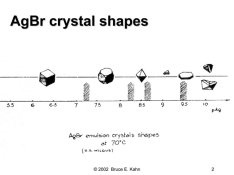JOSarff
Member
I recall a posting about sulfur and gold sensitation that PE said should be around 3:1.
On the light farm website they use Steigmann standard aurous ammonium thiocyanate solution (50ml ammonium thyocyanate 1% and 6ml gold chloride solution 1%) which is about 8:1. Is this "strong enough" or a comprimise because of increased fog with increased gold?
It's in the section on glass plate emulsions.
Thanks all
Joe
On the light farm website they use Steigmann standard aurous ammonium thiocyanate solution (50ml ammonium thyocyanate 1% and 6ml gold chloride solution 1%) which is about 8:1. Is this "strong enough" or a comprimise because of increased fog with increased gold?
It's in the section on glass plate emulsions.
Thanks all
Joe








 D
D It was great. A lucky guess on your part?)
It was great. A lucky guess on your part?)



 .
. 